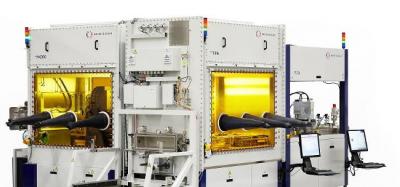Meyer Burger announced that it has shipped a CONx TFE OLED thin film encapsulation system to an Asian customer. This system includes two deposition technologies, inkjet printing and PECVD to offer a complete encapsulation solution for flexible OLEDS.

The CONx TFE system compreses of Meyer Burger's proprietary remote plasma PECVD for inorganic coating and its PiXDRO inkjet printing technology for the deposition of accurately positioned and homogeneous organic layers. Meyer Burger says that the system provides excellent water and oxygen barrier properties without compromising the optical transparency of the encapsulation layer all the while operating at low temperatures and low ion bombardment.
In order to avoid particle contamination which is an important concern in barrier fabrication, Meyer Burger developed a process flow without shadow masks while engineering a clean and inert environment and particle free handling of the substrates.
Meyer Burger further reveals that the company has received orders for a number of R&D encapsulation systems - but the current order is for an industrial scale system.
In September 2016 we reported that Kateeva says it has taken a "commanding lead" in the OLED thin film encapsulation (TFE) market with its ink-jet based systems. Currently both LG and Samsung producers are using PECVD to deposit the in-organic materials, but according to a report from ETNEws, both Korean display makers are thinking about switching to ALD. We do not know whether SDC or LGD is Meyer Burger's Asian customer - it could also be an OLED maker in China, Taiwan or Japan.

